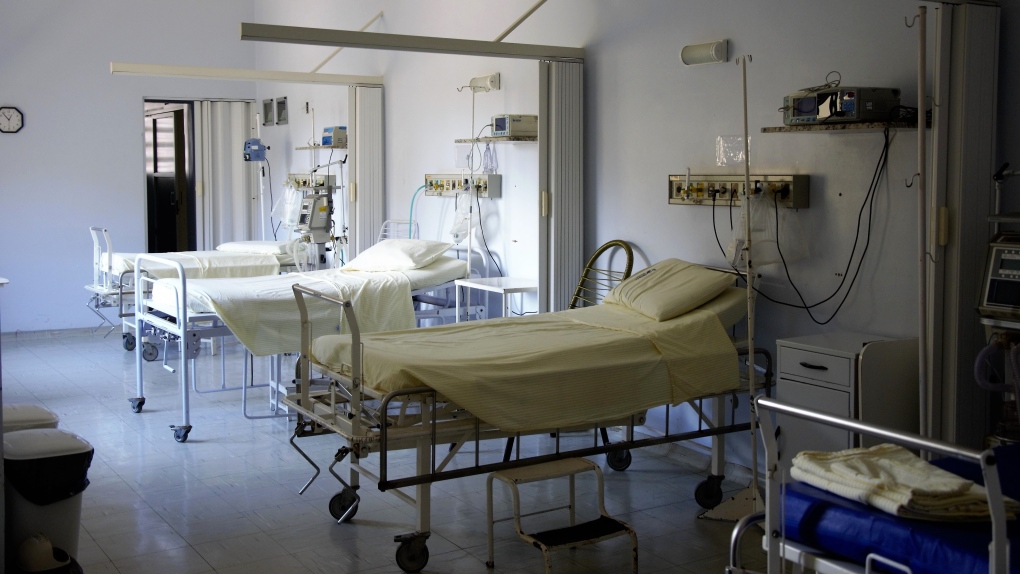Global Courant 2023-05-31 23:27:49
Roy Baird was 78 years old when he was first diagnosed with bladder cancer after finding blood in his urine. After two and a half years of treatment, everything seemed fine – but then it returned with a vengeance.
It’s a common story with what one doctor calls “the sticky cancer.”
“If you’re diagnosed, there’s a 60 to 70 percent chance that the cancer will come back at an early stage,” Dr. Ramy Saleh, a medical oncologist at McGill University Health Center and an expert on bladder cancer, told CTVNews.ca in a telephone interview.
“It can keep coming back and back and back again.”
But while bladder cancer is the fifth most common cancer in Canada, there is a shocking lack of awareness about who it affects most and what the most common risk factor is: smoking.
Being diagnosed with bladder cancer was “a bit of a shock” for Baird, he admitted.
Of course he had a lot of questions for his doctor, the biggest one being, “How does someone get cancer on their bladder in the first place?”
“He said they really don’t know,” Baird told CTVNews.ca in a phone interview. “But one of the most important factors may be cigarette smoking.”
Baird had a history of smoking, but had not touched a cigarette since 1991. He said he had never heard of smoking being a risk factor for bladder cancer, only that it could be one for lung cancer.
Bladder cancer statistics show that more than 75 percent of those diagnosed with this cancer in Canada are men.
But the most common denominator isn’t gender, it’s age and smoking, Saleh said.
“Ninety percent of cancers occur in adults over the age of 50,” he said. “Almost all of them have smoked or are still smoking. Those are the highest things.”
It is still unclear why many more men are diagnosed with bladder cancer than women. Saleh said some of this could be due to the risk factor for smoking, and maybe more men smoke, but he said he wasn’t sure.
It’s no surprise that smoking is a risk factor for lung cancer – the respiratory system is very involved when it comes to smoking. But the mechanisms behind why it is such a big risk factor for bladder cancer are less clear, aside from the fact that smoking in general is associated with a host of adverse health consequences.
“We think smoking may cause some DNA damage in the cells,” Saleh said. “But to know the exact biology, we don’t really have much understanding.”
May is Canada’s Bladder Cancer Awareness Month, but that’s not something Saleh expects most people to know. There’s little awareness of the reality of bladder cancer, he said, especially the treatment process, which can be harrowing, especially as this cancer has a tendency to come back.
“Not only[is]it the fifth most common cancer — about 12,000 people are diagnosed each year alone — but it’s actually the most expensive cancer to treat[of]all cancers combined,” he said.
WHAT MAKES THE STICKY CANCER SO DIFFICULT
Experts are still not sure why bladder cancer recurs so often, Saleh said, but data has shown that when patients have non-muscle-invasive bladder cancer, the chances of it coming back in the future are very high.
“So the patients need to be well informed about that. They need to maintain their relationship with their urologist,” Saleh said. don’t come back, and if they do, they can catch it pretty early before it spreads.
A cystoscopy is when a camera is inserted into the bladder through the urethra to look around and make sure the cancer has not spread. It is not a comfortable or easy process for patients. Although it only takes 30 minutes, patients must spend a few hours in the recovery ward after anesthesia before they can go home.
And while something like a colonoscopy to monitor colon cancer is only done every five years, a cystoscopy needs to be performed much more frequently.
“Sometimes it can even be done once every three to four months,” Saleh said. “Unfortunately, the best way to look inside the bladder and make sure if you have a lesion or if you have a small tumor is that it’s treated fairly quickly.”
The frequency of this procedure is a big reason why bladder cancer is so expensive.
To perform a cystoscopy, you need a urologist, an anesthesiologist, and a nurse, and then space for the patient to recover.
“You have to do all this in a hospital setting,” Saleh said. “And that’s why it drives up costs.”
SIGNS AND SYMPTOMS
Blood in the urine is the most common and obvious symptom of bladder cancer, but other symptoms may include frequent or urgent urination, along with changes in urination patterns such as burning or pain, or a very weak urine stream.
The prognosis depends greatly on the type: there is bladder cancer that has invaded the muscle of the bladder, cancer that has not invaded the muscle, and finally metastatic bladder cancer, cancer that is actively spreading.
When bladder cancer is caught early, before it actively spreads to other parts of the body, it is treatable. But about 10 to 15 percent of people diagnosed with cancer have metastatic disease, Saleh said.
“The five-year survival rate is about five percent,” he said.
Until a person has symptoms prompting a cystoscopy, there is no real way to screen for bladder cancer. There are no blood tests or tests similar to mammograms, for example for bladder cancer, making it all the more important to contact a doctor immediately to access a urologist if you are over 50 and have blood in your urine notices, Saleh said.
It was Baird’s doctor who first noticed he had blood in his urine and prompted the tests to get his diagnosis in 2018.
Over the next two and a half years, he received regular treatment and also underwent four surgeries in which doctors scraped open the bladder to try to remove all of the cancerous tissue.
Finally, Baird said, his doctor did another cystoscopy and told him not to check again for a year, because “everything is beautiful.”
For the next six months, he was under the impression that his bladder cancer was gone. But during a CT scan to examine his kidneys, a tumor was found on one of his ureters — thin tubes that go from the kidney to the bladder.
An oncologist told him that if they didn’t do anything to deal with the tumor, Baird would be dead in six months to a year.
Last year, he began chemotherapy for bladder cancer, which he underwent for three months, which caused the tumor to shrink by about 40 percent. It was then that doctors decided to switch to immunotherapy, which Baird continues to receive.
“I have a treatment every two weeks,” he said. “So anyway, he seems happy with all the bloodwork and everything looks stable.”
Immunotherapy is less invasive than chemotherapy
“Chemo kind of knocks it out of you,” he said. “While this isn’t — you get a little tired, yes, maybe a little back pain, but nothing like the other stuff.”
It’s also relatively new, part of a wave of treatment options being researched, trialled, and incorporated into medical care.
“One thing I think people should know is that there are really a lot of revolutionary drugs coming in,” Saleh said. “I think there is an explosion of drug discoveries for bladder cancer. Patients before that, when they had metastatic disease five years ago, didn’t have many options available to them.
“But recently, in the last five years, we’ve seen a lot of new drugs come out that give patients a better quality of life and longer survival. I think this is important for people to not think like, ‘Oh, I have metastatic bladder cancer, this is game over.’ We are starting to see people living much, much longer than before, and even with better lifestyles.”
He said immunotherapy produces a better and more sustainable response in patients.
“And recently, in the last year and a half, the government has started to approve what we call the antibody-drug conjugate, otherwise known as ADCs,” he added. “And those are also becoming more important than chemotherapy in metastatic disease, both.”
Immunotherapy works by stimulating the immune system to understand how to fight cancer. ADCs act as a delivery system to directly target and kill the bladder cancer cells, he said.
“Those are more technologically advanced, I would say, than chemotherapy that enters your system and kills the good and the bad, whatever it is facing.”
ADVICE FOR PATIENTS
Baird, who is now 83 years old, says he still feels positive about his ongoing battle with bladder cancer.
“I have always been a positive person and this has not diminished it in any way. I’m still positive,” he said.
He wants to share his experience with bladder cancer in hopes of raising awareness, adding that he often sees campaigns for breast cancer and prostate cancer, but rarely talks about bladder cancer.
“I think they need to do (an) equal amount of promotion (awareness) as the other two, because it’s becoming more common now, bladder cancer,” he said. “Especially in men.”
His advice for newly diagnosed patients is to reach out to patient support resources, something he says has been invaluable to him and his family.
“My wife and I both go to a cancer center because she’s a caregiver — and she does a great job, I might add,” he said. “And they are very helpful.”
He and his wife have been together for 57 years.
“It’s also important that family helps you,” he said. “I think that applies to everyone, not just patients with bladder cancer, but it helps. It helps to have that support.”
His other takeaway? Make sure you get a good understanding of the reality of long-term treatment in this type of cancer.
“You have to plan long term, like I said, two years, five years, whatever, treatment,” he said. “Once you have been diagnosed with bladder cancer, you need to think about long-term management of the disease. This type of cancer often requires long-term treatment after initial chemotherapy or radiation therapy. Talk to the doctor.”
The complexity of bladder cancer diagnosis and treatment is compounded by understaffing and other pressures on the health care system, Saleh noted. He hopes there will be more support in the future to help combat this – both in the interest of patients and in the interest of an overwhelmed healthcare system.
“The sooner we catch it, the better for everyone, especially the patients,” he said. “Certainly if we have a better structure with better resources that will certainly reduce the pressure on cystoscopies and access to urologists, that’s for sure.”








